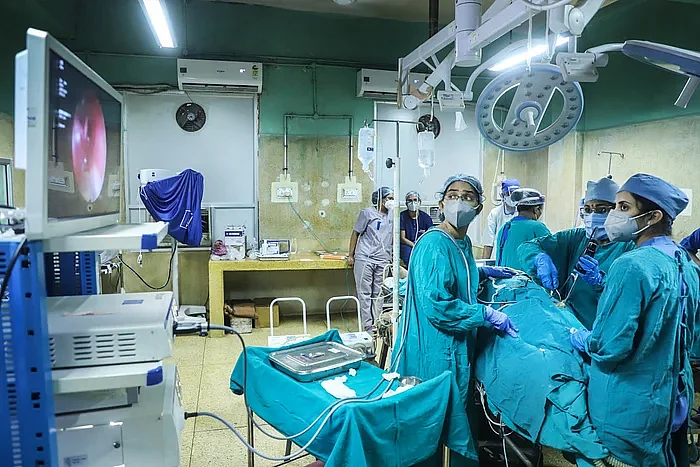Addressing a Health Ministry briefing, All India Institute of Medical Sciences (AIIMS) chief Dr Randeep Guleria, on Monday, 24 May, said that it is better to not use the term ‘black fungus’ while talking of mucormycosis as it causes a lot of avoidable confusion.
Further, Guleria informed that the colour of fungus can be seen differently if it develops in different areas. He also added that maintaining hygiene is the major safeguard against fungal infections.
Dr Guleria also informed that even though "it has been said that children will be infected the most in the third wave (of COVID)", the Pediatrics Association has said that this claim is not based on facts.
“It (the third wave of COVID) may not impact children so people should not fear,” Dr Guleria said.
‘Not a Communicable Disease’
Pointing out that the fungal infection is not a communicable disease, Dr Guleria said:
“People with low immunity are infected with Mucormycosis, Candida and Asporogenous infections. These fungi, mainly found in sinuses, nose, bone around eyes, and can enter the brain. Occasionally found in lungs (pulmonary mucormycosis) or in gastrointestinal tract.”Dr Randeep Guleria | All India Institute of Medical Sciences
Further, Dr Guleria said that “Mucormycosis is the fungi mostly seen in COVID-recovered patients”.
“Occasionally Aspergillus is reported and very few instances of Candida are being seen,” he added.
Explaining Candida, Dr Guleria said: “Candida fungal infection can manifest with symptoms such as white patches in the mouth, oral cavities and tongue. It can infect private parts and can also be found in the blood (in which case it can become serious.”
Talking about Aspergillosis, he said: “Aspergillosis, which is relatively not common, affects and invades the lungs by creating cavities in the lungs.”
On Post Acute COVID Syndrome vs Post COVID Syndrome
Dr Guleria said that there are a few symptoms that are seen after COVID, and explained:
- If the symptoms are seen for 4-12 weeks, it is called ongoing symptomatic COVID or post-acute COVID syndrome.
- If symptoms are seen for more than 12 weeks, it is called post-COVID syndrome
- Chronic fatigue syndrome is seen, which requires symptomatic treatment. There's another symptom generally termed as 'brain fog' on social media, seen in COVID-recovered people who find difficulty in concentration and suffer from insomnia and depression.
What Did the Health Ministry Say?
The Health Ministry on its part said:
- There is no indication as of now that children will be severely affected if the third wave of COVID-19 arrives.
- A steady decline in daily new COVID-19 cases observed in India over the last 17 days.
- 2.6 times increase in COVID tests has been seen in the past 15 weeks and a steady decline in weekly positivity rate for the last two weeks noted in India.
- A total of 14.56 crore (first and second doses) vaccines have been administered to people above 45 years of age. While 1.06 crore vaccines (first dose) has been administered to people between 18 to 44 years of age.
Meanwhile, Lav Agarwal, Joint Secretary, Union Health Ministry, reportedly informed:
"We’re coordinating with (Pfizer & Moderna) on the central level in two ways – approval and procurement. It depends on the surplus how much they can provide to India. They'll come back to GOI, we will ensure and facilitate. On that basis, we may able to supply to states."
(With inputs from ANI.)
